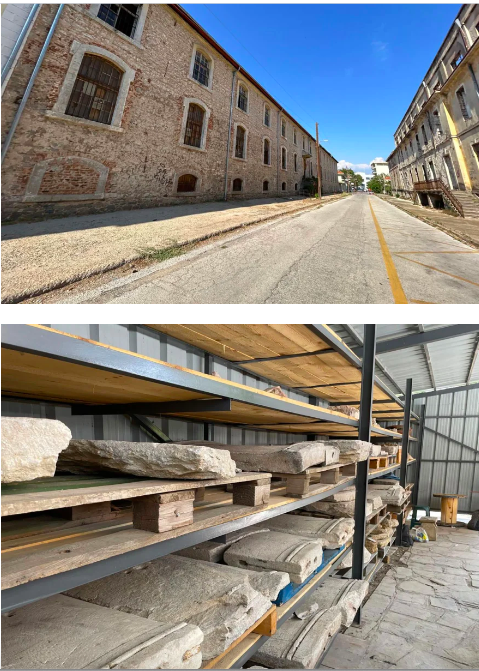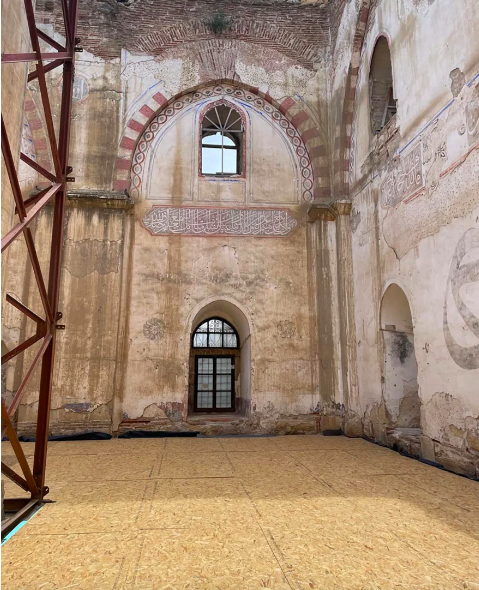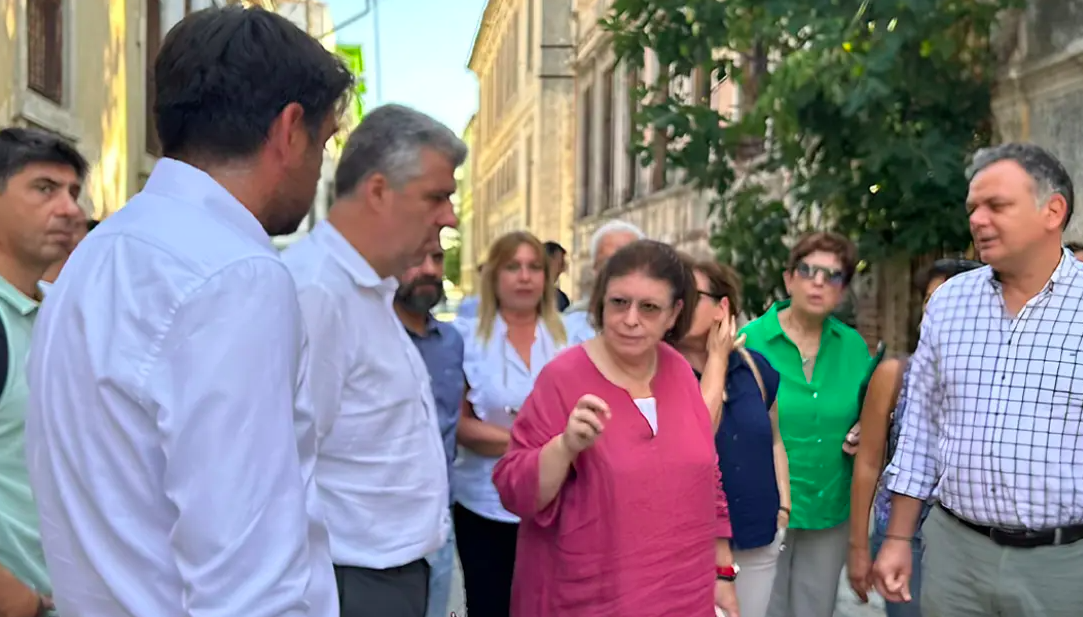The Minister of Culture, Lina Mendoni, made a working visit to the Regional Units of Evros and Xanthi. The first stop was Didymoteicho, where she inspected the Bayezid Mosque, noting the progress in the project’s development over the last month. Lina Mendoni highlighted the importance of adhering to the strict schedule for implementing this emblematic project, which is financed by the Ministry of Culture with resources from the Recovery and Resilience Fund, with a total budget of approximately 13,500,000 euros. The Mosque is to be restored by highlighting elements of all its historical phases so that the structural history of the monument can be read, as well as the interventions made in various periods.
“About a month ago, we inspected the Bayezid Mosque to see the progress of the project, which is financed by RRF funds, managed by the Ministry of Culture and which must be completed by the end of 2025,” emphasized the Minister of Culture immediately after the inspection.
“It is a highly complex project, and the tight schedule that has been set makes it imperative that we follow it closely. That is why we are here today, not only with the Secretary-General and the relevant managers of the Ministry of Culture, but also with the Regional Governor of Eastern Macedonia-Thrace Christodoulos Topsidis, the Mayor of Didymoteicho Romylos Hatzigiannoglou, and the Member of Parliament of Evros Tassos Dimoshakis.

We have an extremely good cooperation with the Region, which is bearing special fruits. A very large part of the projects carried out by the Ministry of Culture in Evros is financed by the Region’s resources, both from the previous programming period 2014-2020 and the current one. We have already done our planning together and know which projects will be funded, while the invitations process is pending.
A strict schedule must be observed at the Bayezid Mosque. The services of the Ministry of Culture – particularly the Directorate for the Restoration of Byzantine and Post-Byzantine Monuments – cooperate closely with the NTUA, whose professors are our scientific advisors, both in the preparation of the study, which was carried out as part of a research program of the Polytechnic University, and in the execution of the project. We are here and will be here again in about a month. Our presence here solves issues that, if we were away, would take weeks. These weeks we can’t afford to lose. So we will be here and watching the project closely.
The contractor who has undertaken the project – always under the close supervision of the Directorate for the Restoration of Byzantine and Post-Byzantine Monuments – makes every effort to be consistent with the schedules. The major issue for this project is the reconstruction of the essence of the wooden roof. This roof, before it burned down, was one of the largest wooden works that had been created in Europe. So we have to restore it in the best scientifically and methodologically appropriate way. That’s what we’re doing. The necessary arrangements have already been made with a foreign company in England, which will undertake the cutting of the timber, mainly from the forests of France, and the subsequent assembly of more than 3,500 wooden pieces, with the very strict specifications set by both the Ministry and the NTUA scientific team,” Lina Mendoni emphasized.

Afterward, a meeting was held in the Municipality of Didymoteicho with the participation of the Regional Governor, the Mayor, the Member of Parliament of Evros, the General Secretary of Culture, managers of the Ministry of Culture, and representatives of the contractor company, to discuss the progress of the project.
The Bayezid Mosque in Didymoteicho is an emblematic monument, one of the most important of the Ottoman Empire. It was inaugurated, according to its entrance inscription, in March 1420. It covers an area of almost one hectare and consists of a square prayer hall and a minaret in the western corner.
The fire that occurred on March 22, 2017, destroyed the roof of the Mosque, making its complete restoration imperative.
The previous covering of the oak roof with lead sheets added to its exceptional monumentality, while the complex structure of its frame makes the monument one of the most important historical wooden monuments in Europe. A series of erosive phenomena and inappropriate past interventions, mainly in the surrounding area, have contributed to its decay and the necessity for restoration.
Ask me anything
Explore related questions





